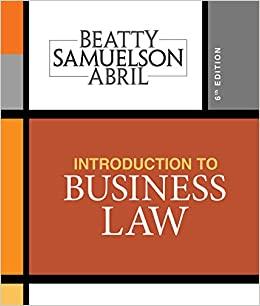Question
2 Scenario Food manufacturers in the small island nation of Autarka have complained that the cost of cardboard, used to produce the packaging for their
2 Scenario
Food manufacturers in the small island nation of Autarka have complained that the cost of cardboard, used to produce the packaging for their products, is too high. The food manufacturers claim that the price of cardboard in Autarka is much higher than in other countries. They allege that cardboard manufacturers are colluding to raise the price in Autarka.
There are three firms that manufacture cardboard in Autarka: Arthur's Accoutrements, Boris' Boxes, and Carl's Cartons. These firms contend that the relatively high prices in Autarka are due both to the small size of the market and to the fact that cardboard is too expensive to import by air or sea.
In response to the controversy, the chair of the ACCC (Autarkan Competition & Con- sumer Commission) has launched a preliminary investigation into the cardboard market. The purpose of the investigation is to determine whether there is sufficient evidence of collusion to warrant a more extensive criminal inquiry.
2.1 Your task
You are an economist working for the ACCC. As part of the preliminary investigation, you have been asked to determine:
Which model of oligopoly competition is most appropriate for analysing the cardboard market.
If there is evidence of collusion between the three cardboard manufacturers, and if so, what is the social cost of the conduct.
Why no other manufacturer has entered the market to challenge the three existing firms.
2.2 The Market
Cardboard is a homogeneous good produced to industry standard specifications. The annual demand for cardboard in Autarka is given by the function,
Q = 10,000,000 1,000,000P,
where Q is the quantity demanded of cardboard for a given year, measured in square metres, and P is the price per square metre.
The equipment for manufacturing cardboard is readily available to manufacturers around the world. Each year a manufacturer must ensure it has sufficient manufacturing capacity installed to produce its desire quantity of cardboard. The marginal cost of cardboard, inclusive of the cost of installing capacity, is $0.60 per square metre. The fixed cost of operating a cardboard manufacturing plant is $4,000,000 per year.
At present, the market price of cardboard is $3.70 per square metre, with 6,300,000 square metres being sold each year.
3.2 Analysis
In the analysis section you must complete each of the steps detailed below. When com- pleting the steps you must:
Type all equations using the 'Insert Equation' function (or equivalent). Show all of your working and include sufficient written description for the reader to
follow your process.
Note that hand draw figures and equations are not acceptable. There is no word/page limit for the analysis section.
For steps 1 and 2 you should assume that the three firms are engaged in Bertrand competition.
Step 1: Find the equilibrium firm prices and quantities. (4 marks) Step 2: Find the equilibrium producer surplus of a typical firm, consumer surplus, and
deadweight-loss. (4 marks)
For steps 3 to 10 you should assume that the three firms are engaged in Cournot competition.
Step 3: Rearrange the demand function to find inverse demand. (2 marks) Step 4: Find the total cost function of the typical firm. Use QA to represent the quantity
produced by the typical firm. (2 marks)
Step 5: Find the profit function for the typical firm. Use X to represent the combined production of the other firms in the market. (3 marks)
Step 6: Find the best-response function of the typical firm. (5 marks) 3
Step 7: Find the equilibrium quantity of the typical firm as a function of N, the number of firms in the market. (4 marks)
Step 8: Find the equilibrium price as a function of N, the number of firms in the market. (3 marks)
Step 9: Find equilibrium producer surplus of a typical firm, consumer surplus, and deadweight- loss, for the case in which N = 3. (6 marks)
Step 10: Find equilibrium producer surplus of a typical firm for the case in which N = 4. (3 marks)
For step 11 you should assume that the market price is $3.70 per square metre, and that each of the three firms produces 2,100,000 square metres of carboard each year.
Step 11: Find equilibrium producer surplus of a typical firm, consumer surplus, and deadweight- loss. (4 marks)
Step by Step Solution
There are 3 Steps involved in it
Step: 1

Get Instant Access to Expert-Tailored Solutions
See step-by-step solutions with expert insights and AI powered tools for academic success
Step: 2

Step: 3

Ace Your Homework with AI
Get the answers you need in no time with our AI-driven, step-by-step assistance
Get Started


